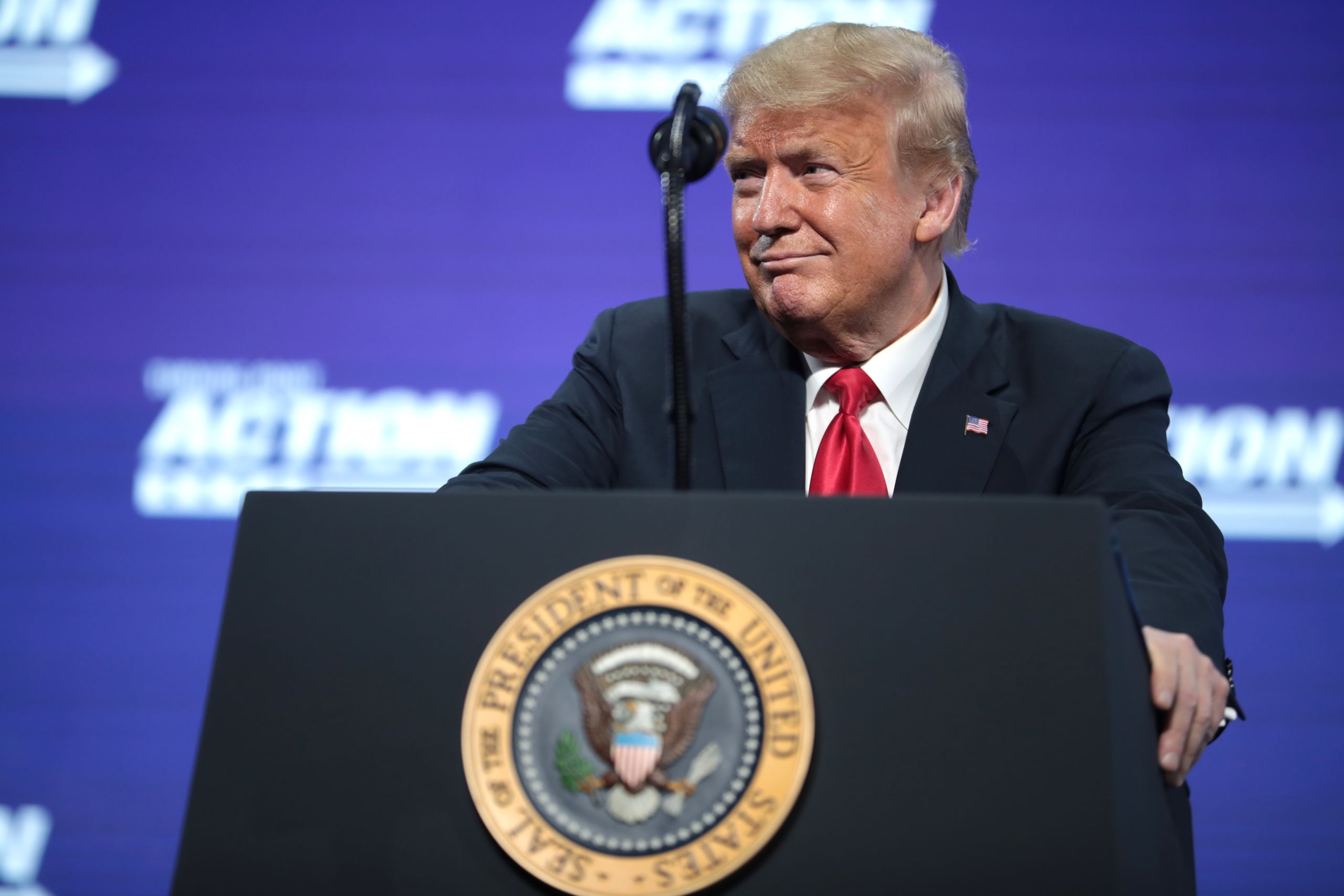The Second Impeachment of Donald J. Trump
On Tuesday 12 of January 2021, Donald Trump made history as the only president in US history to be impeached for a second time. The charges against him this time: incitement of an insurrection.
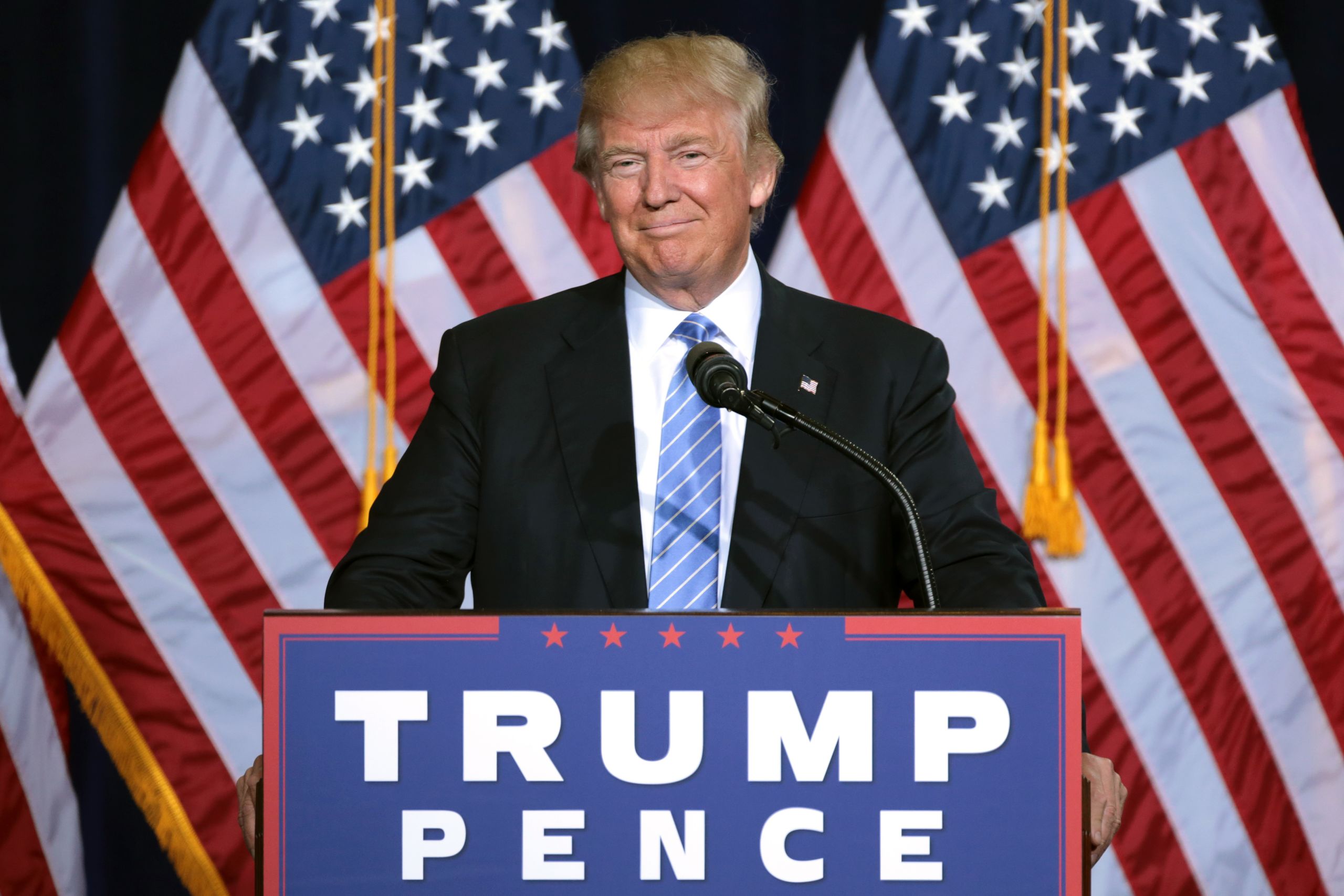
To be impeached in December 2019 was a feat, joining only two other presidents in being charged with an offence deemed significant enough to remove him from office. But now Donald Trump has surpassed Andrew Johnson and Bill Clinton; almost a year after his first trial is set to face the Senate once again. The former president’s final weeks will be remembered as chaotic ones, going as far as causing a physical threat to the democratic process Americans hold in such high regard. How did a US president, whose duty it is to defend the nation and constitution, end up causing an attack leaving five dead and his legacy in tatters?
The 2020 Election
Despite Americans going to the polls on 3 November, the US election result was not called until four days later on 7 November.
With an influx of postal ballots due to the coronavirus pandemic, several state results were not called until days later. With Republican voters tending to vote in person, the phenomena of the so called ‘red wave’ saw the incumbent president pull ahead in the polls, only to lose significant battleground states days later as postal votes were tallied. However, the period of uncertainty along with initial polling allowed Trump to make claims of electoral fraud, that he was the victor, and that the election had been stolen from him.
Senator Bernie Sanders was seen to predict the effects of the increased use of postal ballots before the election on The Tonight Show
Trump’s refusal to concede
Despite the election finally being called, the smooth transfer of power remained at a halt as Trump contested the validity of the results.
He did not fulfil the usual convention of a concession call and sustained legal challenges in state courts, but these were eventually struck down. Yet, by 23 November, Trump had greenlighted the transfer of federal funds to Biden’s incoming administration but still refused to publicly acknowledge that he had lost the election. But the long transition window enabled the outgoing president’s ability to take to Twitter to continually claim himself the victor.
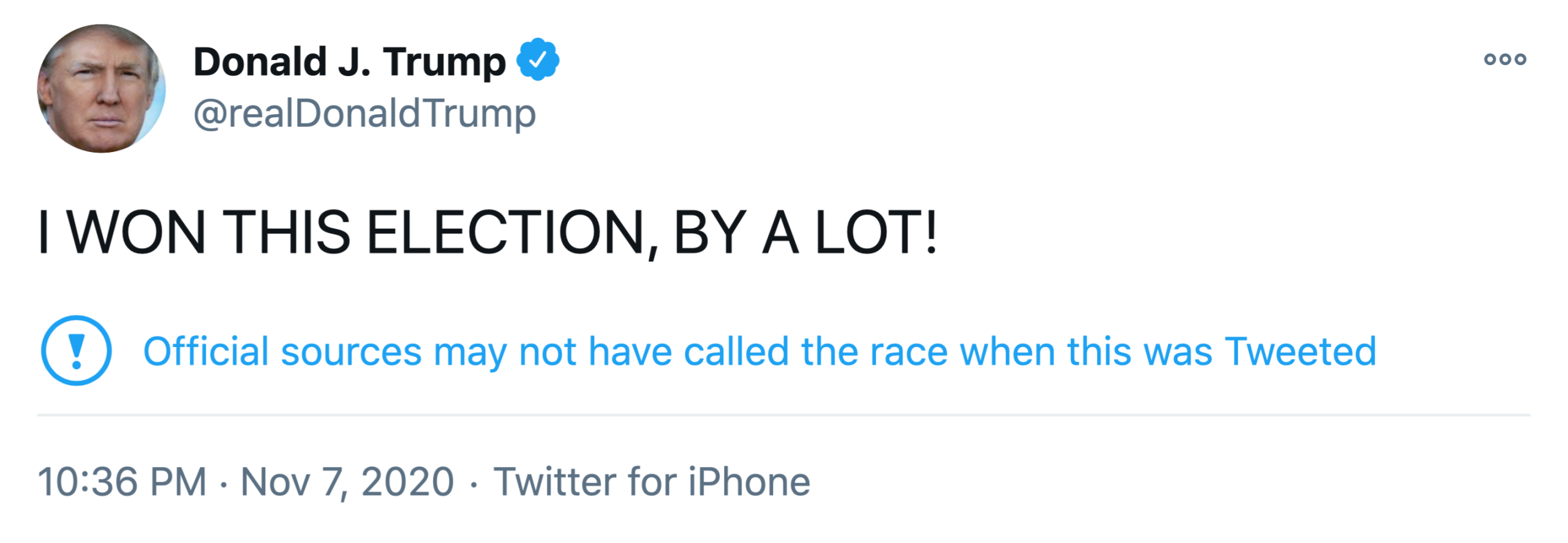
Trump's Tweets in November via Wikicommons
Trump's Tweets in November via Wikicommons
Covid-19 fuelling a further crisis
Anti-governmental attitudes, inflamed by state lockdown, are being viewed as ample kindling for Trump inflaming suspicions of the electoral process.
Trump tweeted on the 19th December that his supporters should go a protest outside of the Capitol on the day that Congress was confirming the electoral college vote. From this tweet, thousands on the right travelled to D.C to protest on the 6th of January and to ‘stop the steal’.
“The QAnon belief that a victory for Biden-Harris can only come from corruption and electoral manipulation heightened fears that have unfortunately become a reality that Trump and his followers would not peacefully concede the election result. QAnon followers have been linked to potential terror attacks, in several cases being apprehended with illegal firearms and explosives. These radical-minded fringes of the Q movement have demonstrated willingness to commit violence in the name of the conspiracy, and ultimately in service of Donald Trump.”
In the days prior to the rally at the Capitol, multiple House Republicans and 11 Senators announced that they would be challenging the certification of the electoral college from Arizona and Pennsylvania on the grounds of voter fraud.
Furthermore, Trump claimed Vice President Mike Pence was in a position to overturn an election certification. However, it was made clear it was not a power possessed by the VP but resulted in Trump calling Pence a coward. Meanwhile, on the 5th the Georgia run-off elections were taking place to decide which party would be in control of the Senate going into Biden's first two years in office.
Image credits: Markus Spiske, Clay Banks, Tai S Capture, Ehimtalor Askhere via Unsplash, Glen Fawcett for CBP via Flickr

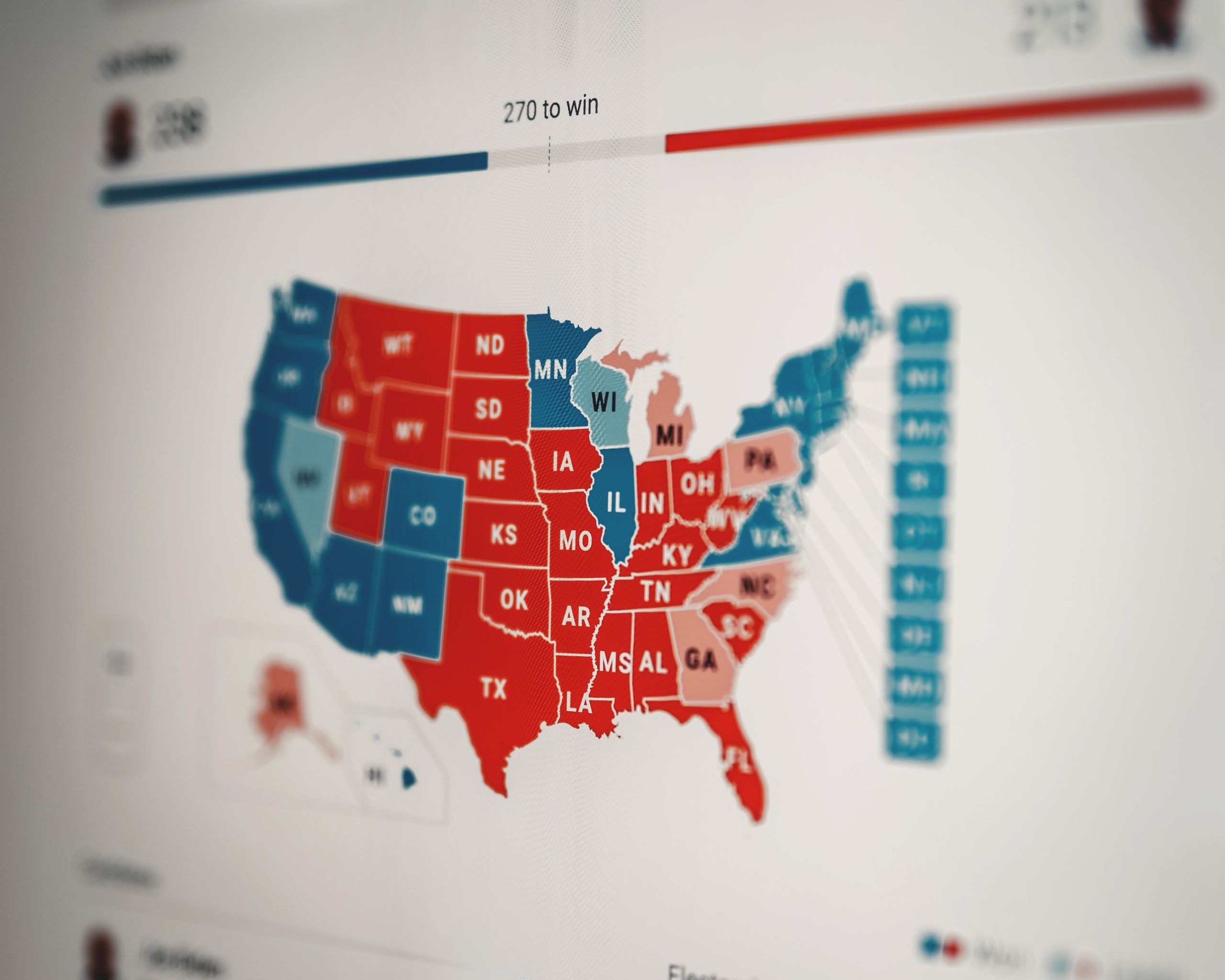


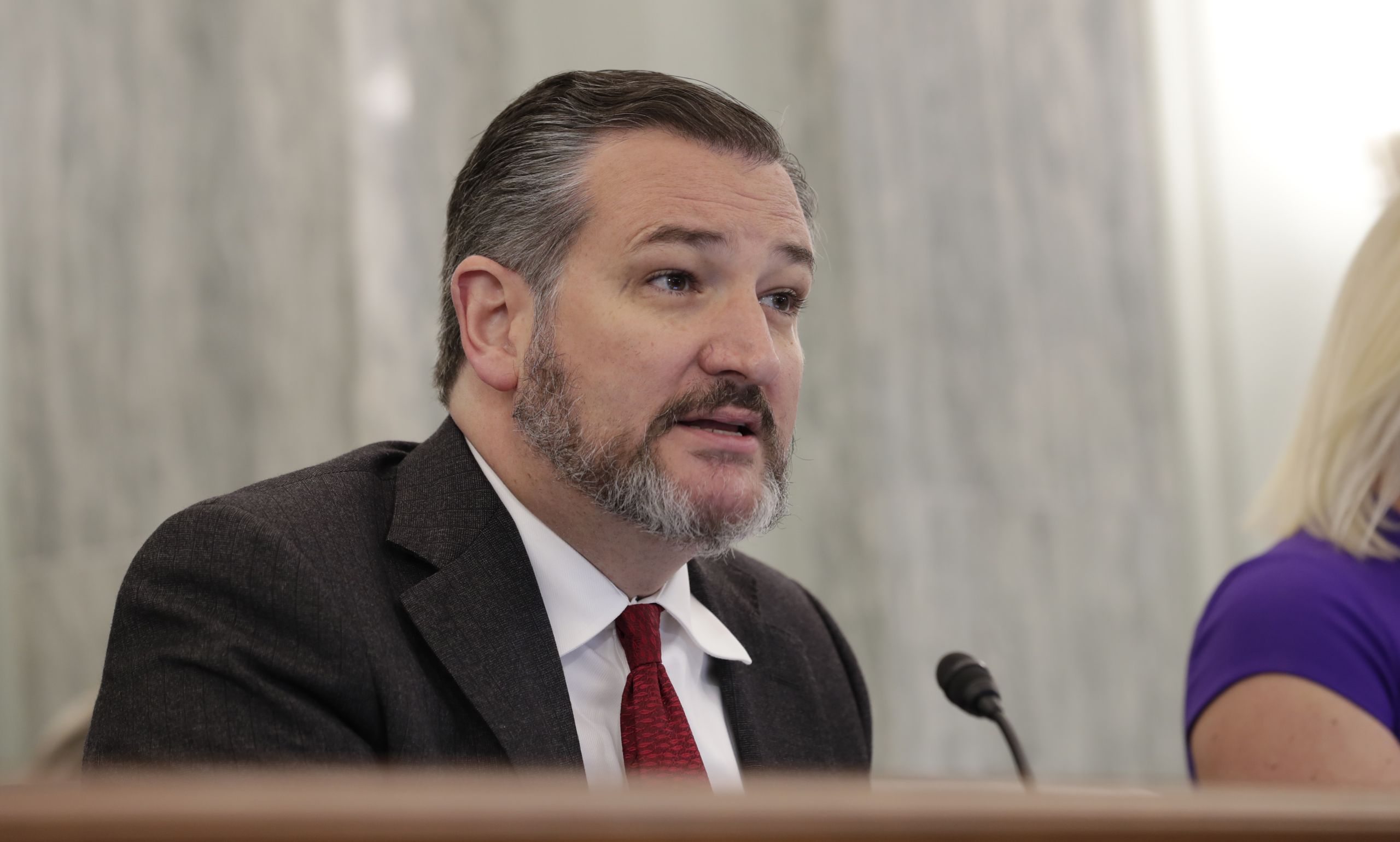
Wednesday 6th January 2021
Trump supporters from across the nation travelled to DC to protest against the certifcation of the electoral college votes in Biden's favour. At the National Mall people waited to see the president speak out in protest of his loss and once again declare that he was the rightful winner. After several speakers took to a stage, Trump spoke to the crowd saying, “we’re going to walk down to the Capitol to cheer on our brave senators and congressmen and women”.
From this, protestors began to make their way down Pennsylvania Avenue to meet with others who had already gathered at the Capitol building. The violent imagery used by Trump prior too and during his speech is what is being cited as him inciting an insurrection from his support base. Either side of Trump’s speech, D.C police had been deployed to the Republican and Democratic National Committee offices respectively after reports of explosive devices at both buildings.
A Vox report on how right-wing groups had been emboldened to use violence
Breaking into the Capitol
12:49 EST - The group made its way onto restricted capitol grounds pushing their way onto staging being set up for Biden’s inauguration.
13:59 - Capitol security had lost control of the situation with people at the Capitol building and began smashing doors and windows to gain entry
14:10 - All staffers within the Capitol texted and told to find safety.
14:11 – First breach of Capitol
14:13 – Vice President Pence is removed from Senate Chamber
14:14 – a group make it to the staircase by the Senate chamber. They are led away by Officer Eugene Goodman, allowing for the Senate to be secured.
CBS report explaining the video of Officer Goodman
Attacks on officials and property
As the attack continued, several insurrectionists began to attempt to breach the two chambers, trapping several congresspeople and staff in the viewing gallery above the main chamber. The advance continued, with the speaker lectern stolen and incumbent Speaker Nancy Pelosi’s office raided. Some protestors were heard chanting out for certain representatives they were targeting, with some even yelling to hang Vice President Pence. As the National Guard and other security forces cleared out the Capitol building of domestic terrorists, a curfew was called over D.C. Senators did not begin to renter the Capitol until 19:09 EST. Five people were dead after the attack, including one member of the Capitol police.
A full video timeline of the insurrection created by the Washington Post
Images: Vlad Porvodny via Unsplash, Tyler Merbler via Flickr, Tyler Merbler via Flickr


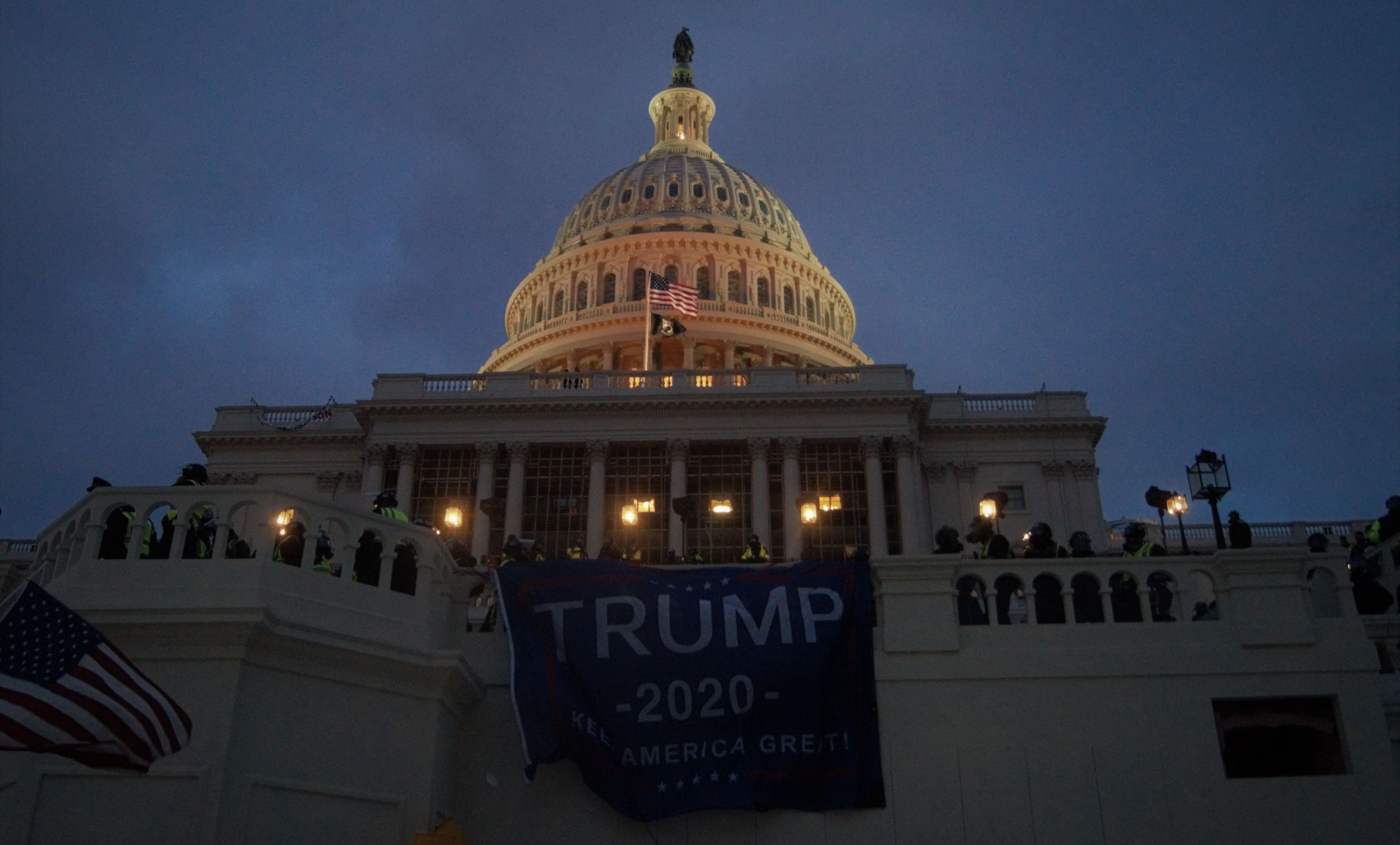
Results come through
After returning to the two congressional chambers, the Electoral College vote was confirmed by Congress.
However, 8/11 of the GOP Senators who previously voiced their plans and 139 Congresspeople from the same party still voted against the approval. Meanwhile, both Jon Ossoff and Reverend Raphael Warnock claimed victory against their Republican opponents. The Senate now sits at a 50/50 split between the two parties, giving Democrats control of the Senate with Vice President Kamala Harris able to cast a deciding vote in cases of a tie.

Picture of Raphael Warnock, the first Black person to represent Georgia in the US Senate
Picture of Raphael Warnock, the first Black person to represent Georgia in the US Senate
Social Media Bans
Following the attack, social media companies began to remove Trump’s accounts on the grounds that he had used them to mobilise and encourage the attack on the Capitol.
Twitter, Facebook, TikTok, Instagram, Youtube and various other sites began to de-platform the former president. Furthermore, right-wing social media app Parler has been removed from several application stores in an attempt to stop further protests being organised at state capitols. Some argued that this was a violation of the US 1st Amendment right to free speech.
Calls for the 25th Amendment
Pence and the rest of Trump’s cabinet were called upon to invoke the fourth clause of the 25th Amendment. This had the potential to remove Trump from power, declaring him unfit for office, with Pence then able to take power for the week until Biden’s inauguration. However, this was not done. Many cabinet members instead resigned after the insurrection. This drove the House of Representatives to vote agin on impeachment.
The vote to impeach
There were several camps that Republican House representatives fell into when it came to attitudes towards Trump’s second impeachment.
Within the GOP, some believed that this was another partisan attack on Trump and that impeachment would not unite the nation but divide it further. Others believed that it was necessary to impeach. In the end, all of the 222 Democrats voted to impeach along with 10 Republicans, with the other 197 Republicans voting against this.
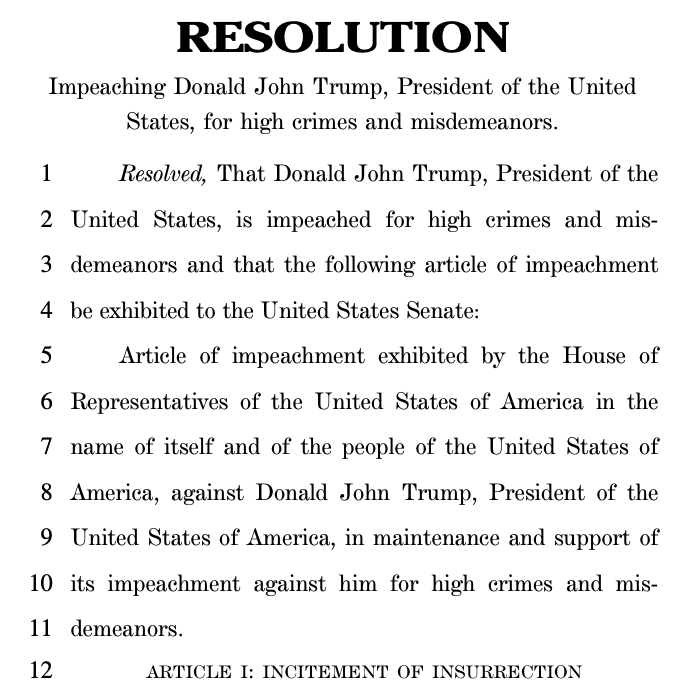
The article of impeachment approved by the House of Representatives
The article of impeachment approved by the House of Representatives
Images: GPA Photo Archive via Flickr, John Cameron via Unsplash, Greg Skidmore via Flickr
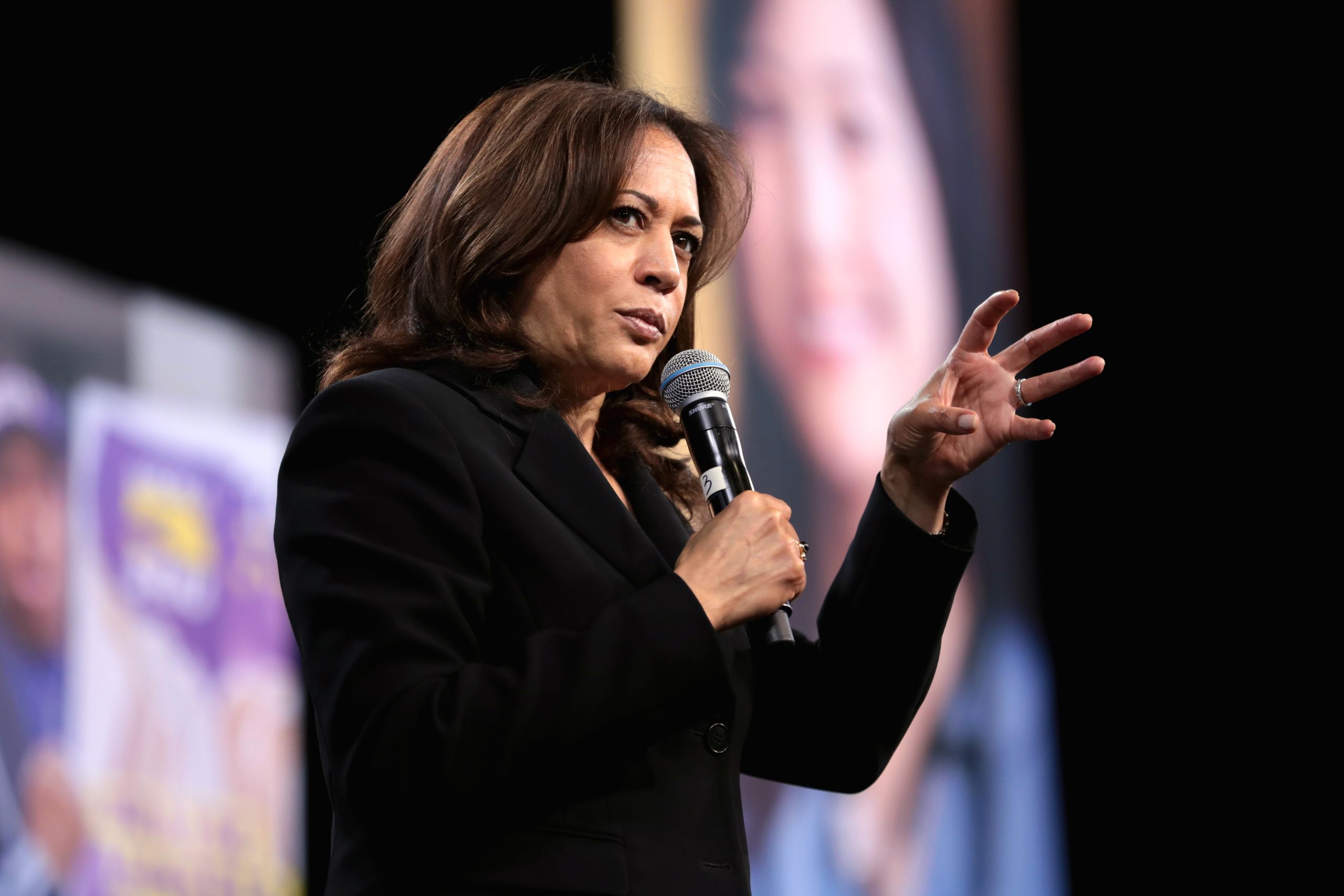
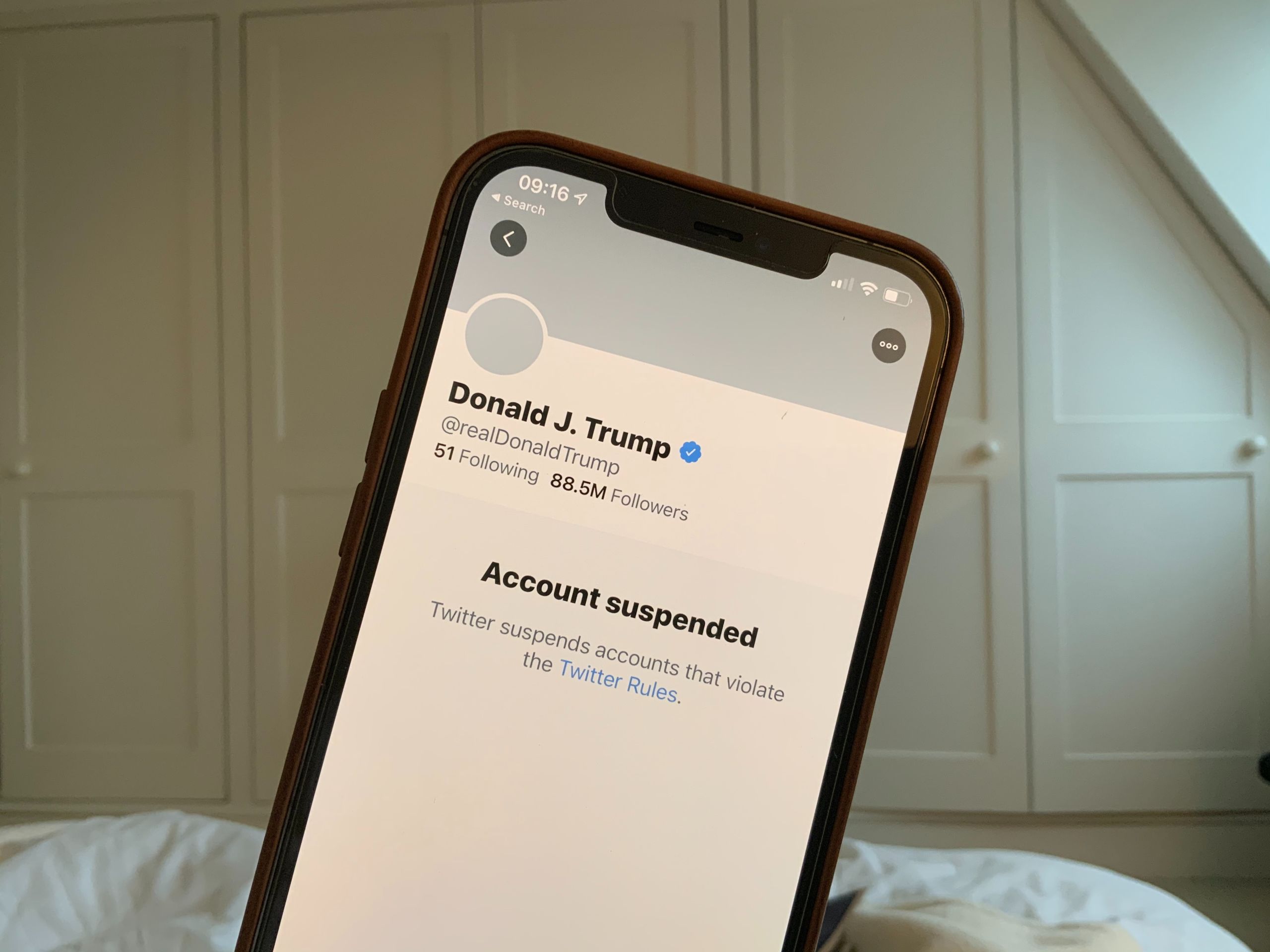
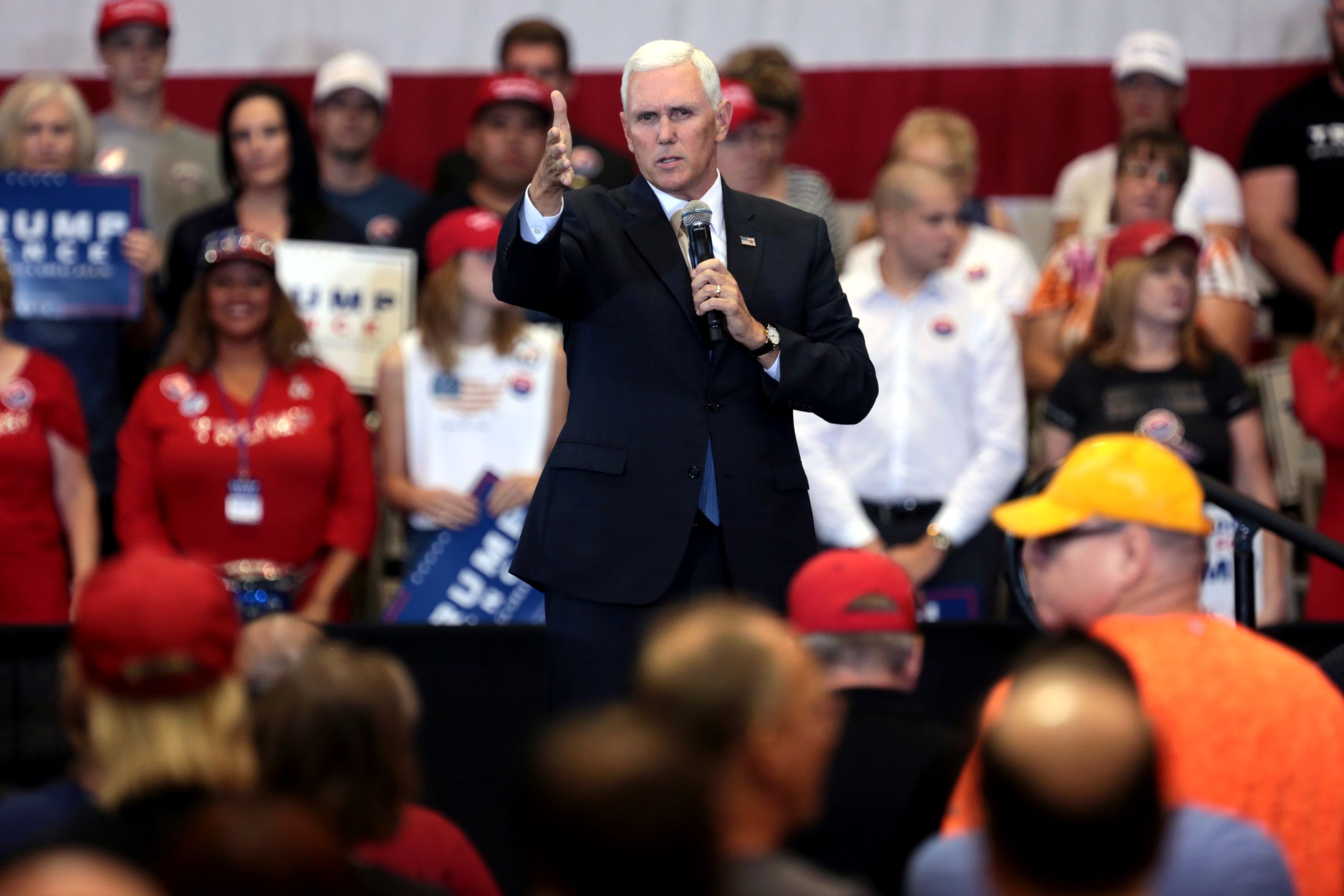
Why still impeach Trump?
Although Trump has now left office, there are several reasons that the impeachment still went through. Firstly, if found guilty, he could be prevented from running for election in any position in the federal government again, preventing him from ever being president again. As well as this the presidential pension, annual travel budget and office funding given to former presidents would be removed. Furthermore, many have argued that although the insurrection failed, the perpetrators of a terrorist attack should still be punished.
The impeachment process
The trial sees the House arguing as the prosecution, arguing that Trump should be found guilty of the crime of inciting an insurection. Nancy Pelosi has appointed 9 Democrat House representives as 'impeachement managers': Representatives Raskin, DeGette, Cicilline, Castro, Lieu, Plaskett, Swallwel, Dean and Neguse. Trump will be represented by a personal legal team. Chief Justice Roberts of the US Supreme Court will preside over the case, but all 100 Senators will be the judges in the ‘High Court of Impeachment’. To be found guilty of the charges against him, a supermajority of 2/3 of the Senate (67 senators) need to vote to find Trump guilty.
How likely is impeachment?
A key difference between this impeachment trial is that the Democrats are now effectively in control of the chamber. However, to impeach Trump would require all Democrats, the two independents who usually vote with them and 17 Republicans to vote against the former president. Under usual circumstances, the process is extremely partisan however the party loyalty to Trump from some can be seen to have dwindled as they try to save what is left of the GOP. But with 45 of the 50 Republican Senators voting to dismiss the trial against Trump on the grounds it was unconstitutional, Trump could be able to come out the trial 'not guilty' once again.
Images: Tyler Merbler via Flickr, Brandon Mowinkle via Unplash and Tim Brown via Flickr
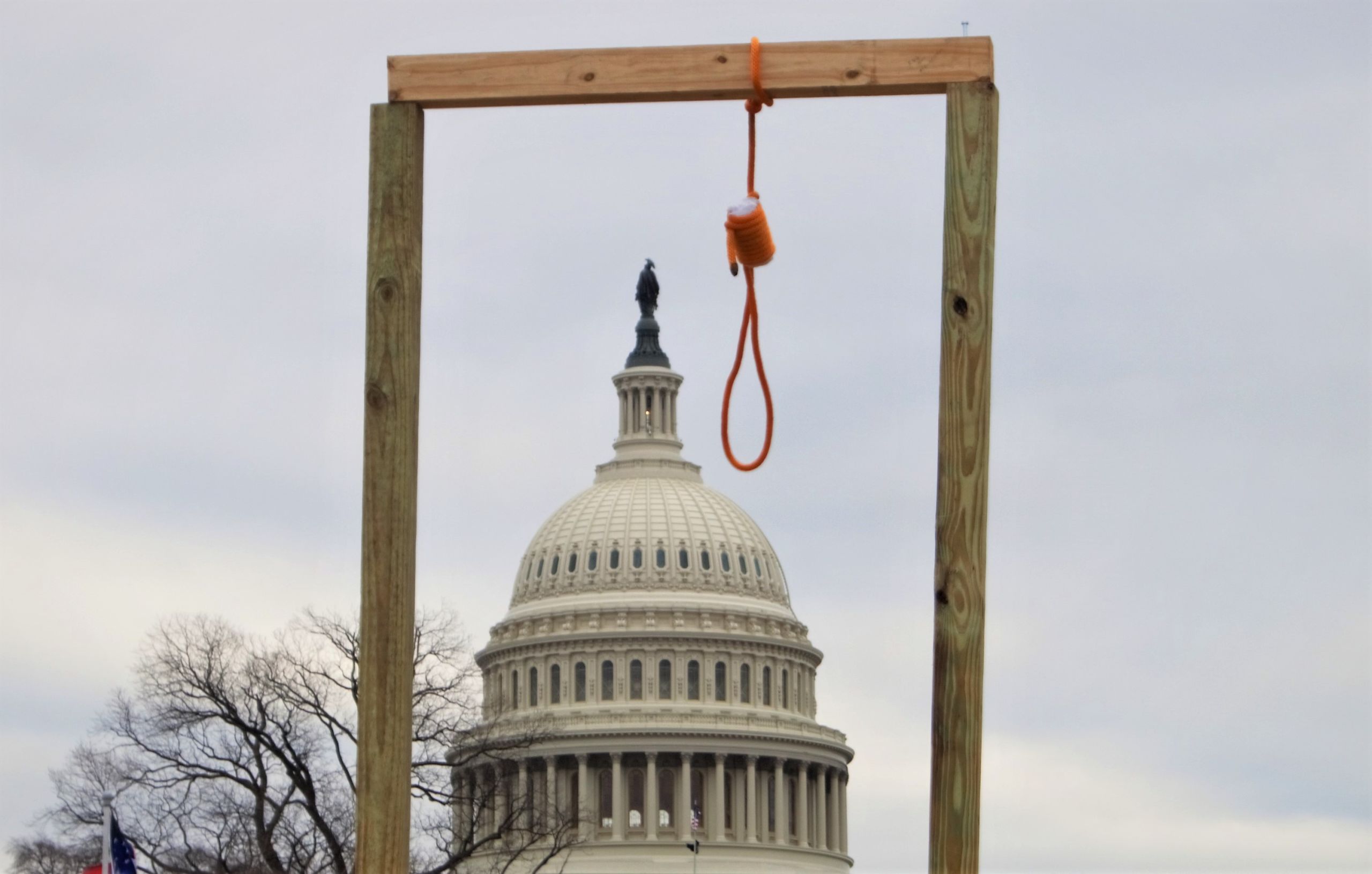

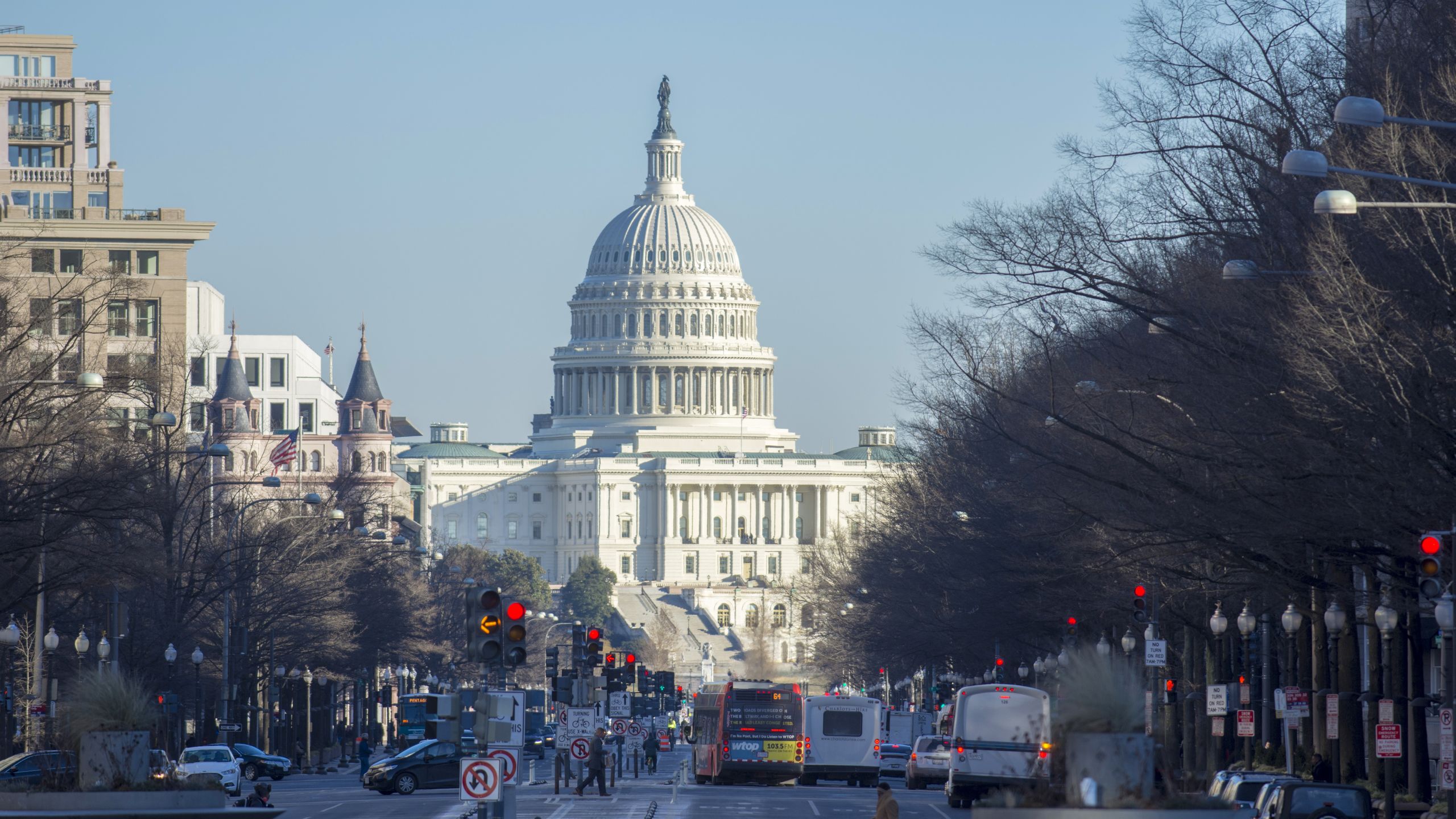
Donald Trump has survived scandal after scandal throughout his presidency. He has broken with convention and previously come off unscathed. Found not guilty in his first impeachment he appeared indestructible and only able to be removed by the people of America via democratic means. However, in the final weeks of his presidency, Trump might have secured himself a less than favourable first in history books – the first president to be found guilty of impeachment charges.
The trial begins Tuesday 9th February 2021.
